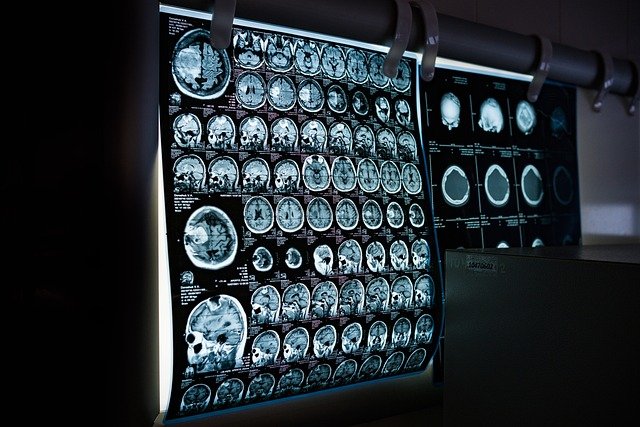Tardive Dyskinesia in the United States: Early Signs, Causes, and Today’s Most Effective Treatments
Tardive Dyskinesia is a neurological condition characterized by involuntary, repetitive movements that can significantly impact daily life. Often linked to long-term use of certain medications, particularly antipsychotics, this disorder affects thousands of individuals across the United States. Understanding its early warning signs, underlying causes, and available treatment options is essential for patients, caregivers, and healthcare providers. This article explores the clinical features of TD, how it differs from similar conditions, diagnostic approaches used in American healthcare settings, and when professional evaluation becomes necessary.

Tardive Dyskinesia represents a challenging movement disorder that emerges primarily as a side effect of prolonged medication use. While it can affect anyone taking specific drugs, awareness of its manifestations and timely intervention can make a substantial difference in managing symptoms and improving quality of life.
This article is for informational purposes only and should not be considered medical advice. Please consult a qualified healthcare professional for personalized guidance and treatment.
What Tardive Dyskinesia Looks Like: Early and Advanced Signs
The hallmark of Tardive Dyskinesia involves involuntary movements that patients cannot control. Early signs often appear subtle and may include slight tongue movements, lip smacking, or rapid blinking. Patients might notice their jaw moving side to side without intention, or experience facial grimacing that occurs spontaneously. As the condition progresses, movements typically become more pronounced and can extend beyond the face to include the trunk and limbs.
Advanced symptoms may involve repetitive chewing motions, puffing of the cheeks, or protruding tongue movements. Some individuals develop finger movements resembling piano playing, rocking motions of the torso, or irregular breathing patterns. These movements often worsen during stress or concentration and may temporarily decrease during sleep. The severity varies considerably among patients, ranging from mild and barely noticeable to significantly disabling movements that interfere with eating, speaking, and social interactions.
How TD Differs From Other Movement Disorders
Distinguishing Tardive Dyskinesia from other movement disorders requires careful clinical observation. Unlike Parkinson disease, which primarily causes slowness and rigidity, TD produces excessive, involuntary movements. Parkinson tremors typically occur at rest and have a characteristic pill-rolling quality, while TD movements are more choreiform and involve different body regions.
Huntington disease shares some movement similarities with TD but follows a genetic pattern and includes cognitive decline and psychiatric symptoms as core features. Essential tremor produces rhythmic shaking during voluntary movement, contrasting with the irregular, involuntary nature of TD. Dystonia causes sustained muscle contractions leading to twisting postures, whereas TD movements are more rapid and repetitive. The medication history remains crucial in diagnosis, as TD specifically relates to dopamine-blocking drug exposure, setting it apart from primary neurological conditions.
What Causes Tardive Dyskinesia?
The primary cause of Tardive Dyskinesia involves long-term use of medications that block dopamine receptors in the brain. Antipsychotic medications, both typical (older) and atypical (newer) formulations, represent the most common culprits. Drugs used to treat schizophrenia, bipolar disorder, and severe depression carry varying degrees of risk. Metoclopramide, prescribed for gastrointestinal issues, also poses TD risk, particularly with prolonged use.
The underlying mechanism involves changes in dopamine receptor sensitivity following chronic blockade. When these medications occupy dopamine receptors for extended periods, the brain may compensate by increasing receptor numbers or sensitivity. This neuroadaptation can lead to excessive dopaminergic activity in motor control regions when the drug is reduced or discontinued, producing the characteristic involuntary movements.
Risk factors include advanced age, female gender, diabetes, longer duration of antipsychotic treatment, and higher cumulative doses. Genetic factors may also influence susceptibility, though specific genes remain under investigation. Not everyone exposed to these medications develops TD, suggesting individual vulnerability plays a significant role.
Diagnosis: How TD Is Identified in the U.S.
American healthcare providers diagnose Tardive Dyskinesia through comprehensive clinical evaluation. The process begins with detailed medication history, documenting all dopamine-blocking drugs taken, including duration and dosage. Physicians use standardized assessment tools such as the Abnormal Involuntary Movement Scale, which systematically rates movements across different body regions.
Neurological examination focuses on observing involuntary movements in the face, mouth, trunk, and extremities. Providers may ask patients to perform specific tasks to assess movement suppression or exacerbation. Video recording sometimes aids in documenting baseline severity and tracking changes over time. Laboratory tests and brain imaging typically serve to exclude other neurological conditions rather than confirm TD directly, as no specific biomarker currently exists.
Differential diagnosis remains essential, ensuring symptoms do not stem from other movement disorders, medication withdrawal effects, or unrelated neurological diseases. The temporal relationship between medication exposure and symptom onset provides crucial diagnostic information. In the United States, neurologists and psychiatrists with movement disorder expertise often collaborate on complex cases.
When to Seek Medical Evaluation
Anyone experiencing new involuntary movements while taking or after discontinuing antipsychotic medications or metoclopramide should seek prompt medical evaluation. Early recognition improves treatment outcomes and may prevent progression. Patients noticing facial tics, tongue movements, or other uncontrolled motions should contact their prescribing physician or request referral to a neurologist.
Caregivers noticing these signs in family members taking relevant medications should encourage medical consultation. Healthcare providers may adjust medications, reduce dosages, or switch to alternatives with lower TD risk. Delaying evaluation allows symptoms to potentially become more severe and less reversible. Even mild symptoms warrant professional assessment, as early intervention strategies exist.
Individuals with established TD diagnoses require ongoing monitoring to track symptom changes and treatment responses. Regular follow-up appointments enable medication adjustments and implementation of emerging therapies. Support groups and patient education resources available throughout the United States provide valuable information and community connections for those affected by this condition.
Managing Tardive Dyskinesia requires coordinated care between patients, families, and healthcare teams. While the condition presents significant challenges, growing treatment options and increased awareness offer hope for symptom control and improved quality of life. Continued research into prevention strategies and novel therapies promises better outcomes for future patients at risk for this medication-related movement disorder.



